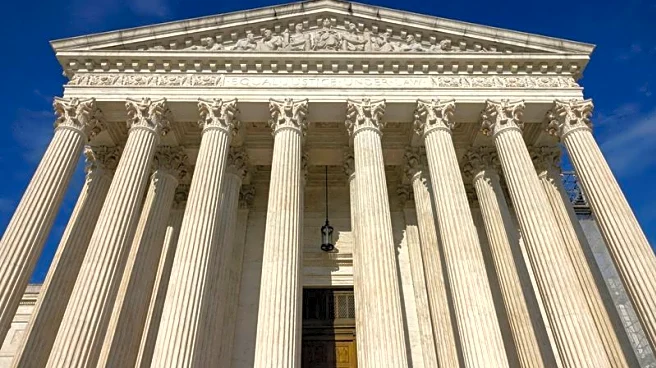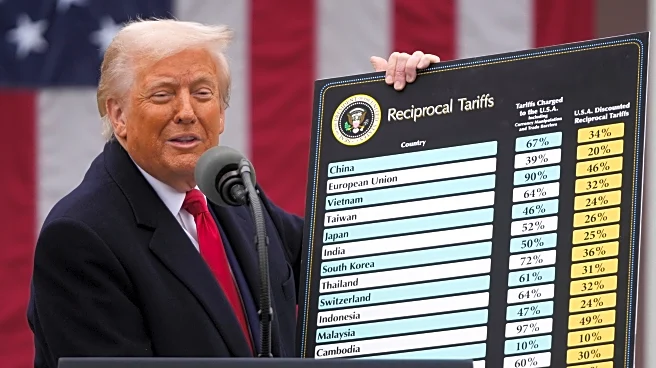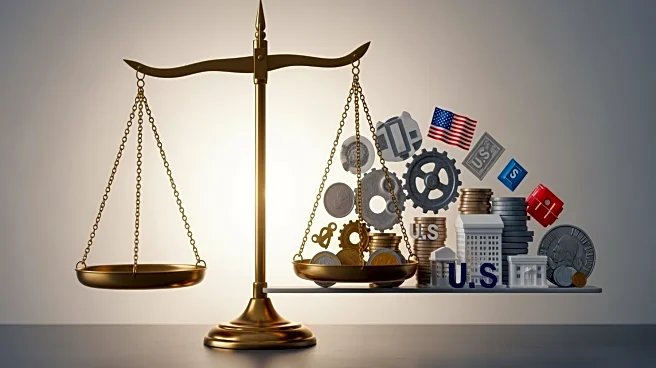What's Happening?
The Trump administration's imposition of tariffs has significantly impacted the U.S. decorative arts and antiques market. A 25% tariff on wood imports and derivative products, such as upholstered furniture
and kitchen cabinets, was enacted following an executive order signed by President Trump on September 29. This move aims to support domestic manufacturers, particularly in North Carolina, but has inadvertently affected the international trade of antiques and decorative arts. Dealers like Millicent Ford Creech and Steven J. Chait have expressed concerns over the increased costs and competitive disadvantages these tariffs create. The tariffs, which vary by country, have led to confusion and increased costs for importing items, particularly those with components from multiple countries. The U.S. Supreme Court is set to hear a case challenging the legality of these tariffs under the International Emergency Economic Powers Act.
Why It's Important?
The tariffs have broader implications for the U.S. economy and international trade relations. By increasing the cost of imported goods, the tariffs aim to encourage domestic production and protect local industries. However, they also risk alienating international partners and disrupting established trade practices. The antiques and decorative arts market, which relies heavily on international trade, faces significant challenges as dealers struggle with increased costs and logistical complexities. This could lead to a decline in the availability of foreign antiques in the U.S. market, potentially reducing consumer choice and impacting businesses reliant on these imports. The Supreme Court's decision on the legality of these tariffs could set a precedent for future trade policies and executive powers.
What's Next?
The U.S. Supreme Court's upcoming decision on November 5 will be crucial in determining the future of these tariffs. If deemed unconstitutional, it could lead to a rollback of the tariffs, providing relief to affected industries. However, if upheld, businesses may need to adapt to the new trade environment, potentially seeking alternative markets or focusing on domestic sourcing. The decision will also influence future administrations' approach to trade policy and executive authority in imposing tariffs.
Beyond the Headlines
The tariffs highlight the tension between protectionist trade policies and global market integration. While intended to bolster domestic industries, such measures can lead to unintended consequences, such as market disruptions and strained international relations. The case also raises questions about the balance of power between the executive branch and legislative oversight in trade matters. The outcome could influence how future administrations navigate trade policy and international economic agreements.













